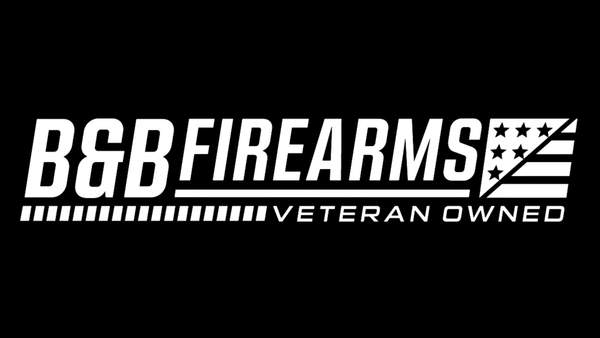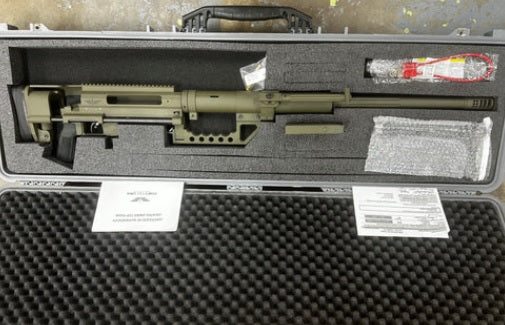The world of extreme long-range rifle shooting is full of dense terminology, and everyone has their own opinions on what rifles and cartridges are best, as well as on shooting discipline - for instance, do you hold your breath or simply shoot at the bottom of the breathing cycle?
This post will attempt not to open any of those cans of worms. Rather, we will point out a few of the things you should be looking at when you’re looking into purchasing an extreme long-range rifle.
Cartridge and Effective Range
A rifle’s chambering will impact a lot of other things that will be evaluated in this article, including the cost of shooting, recoil, muzzle energy and ballistic efficiency, as well as effective range.
Some cartridges have greater effective ranges than others, such as the .50 BMG, which has long been used as an extreme long-range cartridge and which has an effective range of 1,970 yards.
Other long-range cartridges, like .338 Lapua, are comparable, with effective ranges of 1,910 yards. The .375 CT is another good option, with a maximum effective range of 2500 yards, making it one of the best (and flattest shooting) extreme long-range cartridges in the running.
The other thing is that the cartridge will affect the cost. As a general rule, extreme long-range cartridges are quite expensive and cost several dollars per round. The .50 BMG is among the most expensive among them, and often costs upwards of $10 per round, and sometimes close to $20.
Ammo availability is another thing to consider in the cartridge. Specialty cartridges like .375 and .408 CT are harder to find, and .50 BMG can be too, making .338 Lapua, which is commonly used for hunting, one of the better options.
Retained Energy
Just because a cartridge can hit a target at a specific distance doesn’t mean its retained energy is going to be that good when it gets there.
However, if you restrict the scope of this analysis to long-range cartridges, they’re all pretty well known for high ballistic efficiency and holding onto energy till they get to a target.
Consider .50 BMG, which retains between 2500 and 3500 ft-lbs, even at 1000 yards, as an example. If you’re going to use the rifle for hunting, the higher the better, but energy in excess of 2000 ft-lbs might also be more than you need, making some lighter cartridges potentially better (depending on target species).
Of course, these things are affected by load data and bullet weight, so there’s some room to tinker with performance here, especially if you load your own long-range cartridges.
Rifle Cost
Most extreme long-range rifles are going to cost several thousand dollars, so these are not budget rifles by any stretch of the vocabulary.
Rifles range in price from the McMillan 338, around $6000, to the CheyTac M200 Intervention, which costs almost double, close to $12000, depending on features and configuration.
However, it’s not just the price of the rifle that we suggest you consider here, but rather how you will be paying. For our part, at B&B Firearms, we offer a unique, interest-free payment plan on many of the platforms we sell.
You pay 20% down up-front, then you pay off the rest over the next few weeks - and no interest, so it’s basically “free” financing.
Rifle Weight

The rifle weight is something to consider here because, like the chambering, it will directly impact recoil.
Keep in mind that most of these long-range rifles are very heavy. The McMillan 338 is relatively light at 13 pounds (which is still heavy for a rifle). Then you have the CheyTac M200 Intervention, which weighs more than 30 pounds without an optic, and the ArmaLite AR-50 A1, which weighs almost 40 pounds.
The reason this is so important is because, especially in the latter case, these cartridges produce a ridiculous amount of recoil - but in a gun that weighs nearly 40 pounds? Not so much.
Whether or Not the Barrel Is Threaded
The reason a threaded barrel is important is that it is the other half of the recoil picture because you can install a compensator.
Although, in some cases you won’t need to. Many of the extreme long-range rifles we sell at B&B Firearms come pre-outfitted with a compensator that substantially reduces recoil.
The Stock
In a precision rifle, a customizable, adjustable stock is not just nice to have, it is a necessity. Consistent length-of-pull that fits the shooter, as well as an adjustable comb that allows for customizable comb height and a good cheek weld are critical to connecting with targets at extended ranges. Any good long-range rifle will have a modular, adjustable stock.
Also, as in the case of the CheyTac M200 Intervention, the stock contains an integral bipod that is more or less actually a tripod, which helps shooters establish a viable shooting surface nearly anywhere.

Explore the M200 Intervention, McMillan 338 and Other Extreme Long-Range Rifles Here
Want to learn more about the M200, AR-50A1, McMillan 338 or other long-range rifles? Get in touch with us and we’ll be more than happy to help you make a decision that will suit your needs and goals well.

